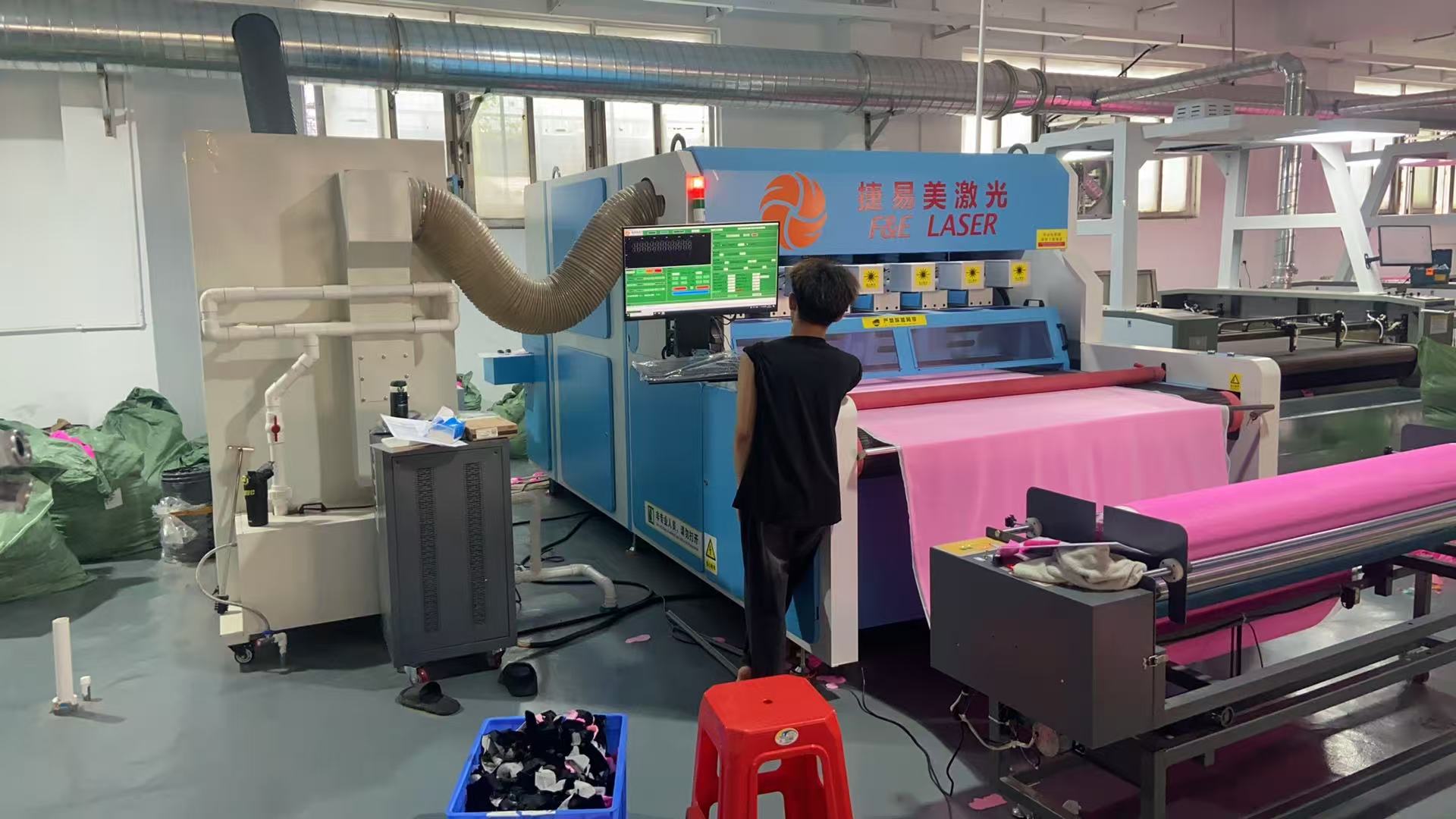.gtranslate_wrapper
What is Laser Fabric Cutting?

Laser fabric cutting involves using a laser beam to focus on the fabric’s surface, utilizing the laser’s high temperature to rapidly vaporize, melt, or burn the fabric, thereby achieving precise cuts. Compared to traditional cutting methods, laser cutting offers higher precision, speed, and flexibility.
Laser cutting technology is widely used in industries such as fashion manufacturing, home décor, automotive interiors, and medical textiles, especially in industries that require high precision in fabric processing. Laser cutting provides a significant competitive advantage in these fields.
Advantages of Laser Fabric Cutting
- High Precision: Laser cutting allows for micron-level control, ensuring that each piece of fabric is cut to exact specifications. It can easily achieve complex geometric shapes and intricate details.
- Non-contact Cutting: Unlike traditional mechanical cutting, laser cutting is non-contact, meaning there is no physical friction or deformation of the fabric. Without direct contact, the fabric does not experience stretching or distortion, ensuring a higher quality cut.
- Speed: Laser cutting is extremely fast, especially for high-volume production, significantly reducing production time. It can cut up to 1000 pieces per minute, improving overall production efficiency.
- Smooth, Burn-Free Edges: Laser cutting produces smooth edges, eliminating the need for additional finishing work, which reduces both time and labor costs.
- Versatility for Multiple Materials: Laser cutting works on a variety of fabrics, from cotton and leather to synthetic fabrics and delicate textiles, making it suitable for diverse industries.
- Eco-Friendly and Energy-Efficient: Laser cutting is more energy-efficient than traditional methods and reduces material waste, contributing to more sustainable production. Compared to conventional cutting methods, laser cutting offers better environmental benefits.

Applications of Laser Fabric Cutting
- Fashion Industry: Laser cutting plays a significant role in fashion manufacturing, especially for high-end custom clothing and designs. It provides precise cuts for both simple patterns and intricate designs, offering flexibility and speed in garment production.
- Home Décor and Furniture: In the home décor industry, laser cutting is widely used for cutting fabrics for curtains, sofa covers, and other furniture products. The precise cutting ensures that all components fit together perfectly, enhancing the overall quality and appearance of the product.
- Automotive Industry: The automotive industry demands high-quality, durable materials for seat covers and interior fabric panels. Laser cutting ensures precise and clean cuts for these materials, meeting the high standards required for automotive production.
- Medical Industry: Laser cutting is also widely used in the medical field, particularly for cutting medical textiles such as surgical gowns and dressings. The high precision and cleanliness of laser cutting are crucial for medical applications.
Future Trends of Laser Fabric Cutting Technology
With ongoing advancements in technology, laser fabric cutting equipment is becoming more intelligent and automated. For instance, integrating automatic feeding systems, intelligent detection systems, and automated layout systems not only improves production efficiency but also reduces waste and enhances cutting precision.

